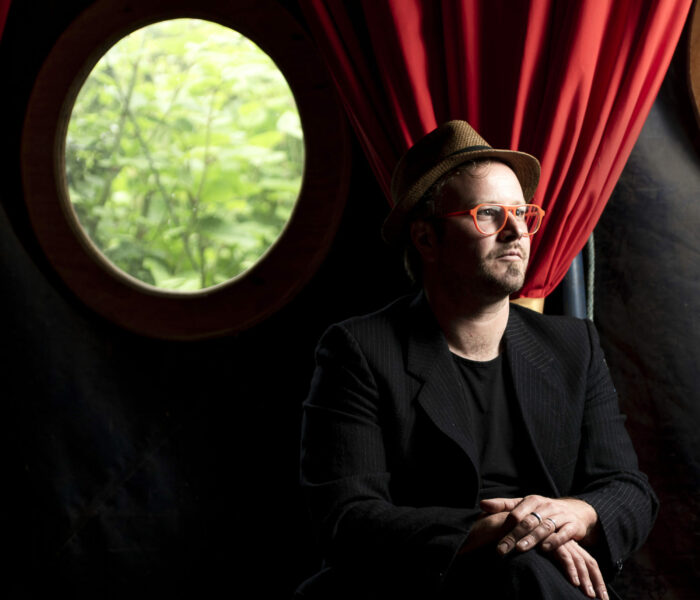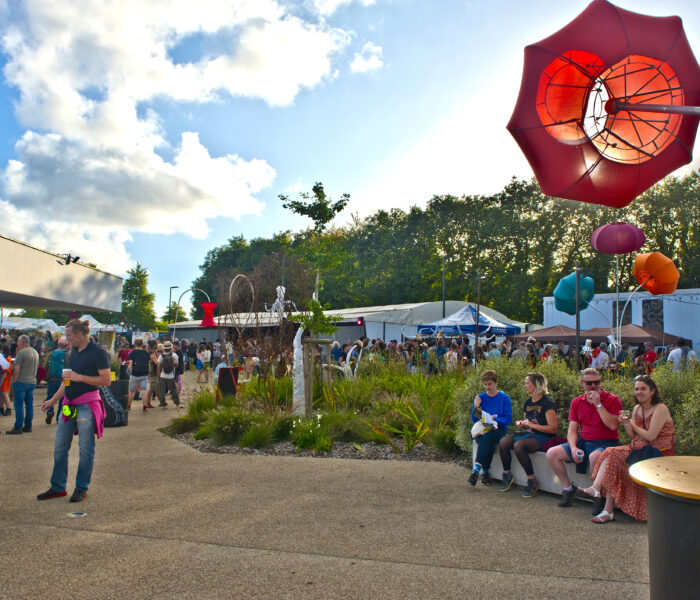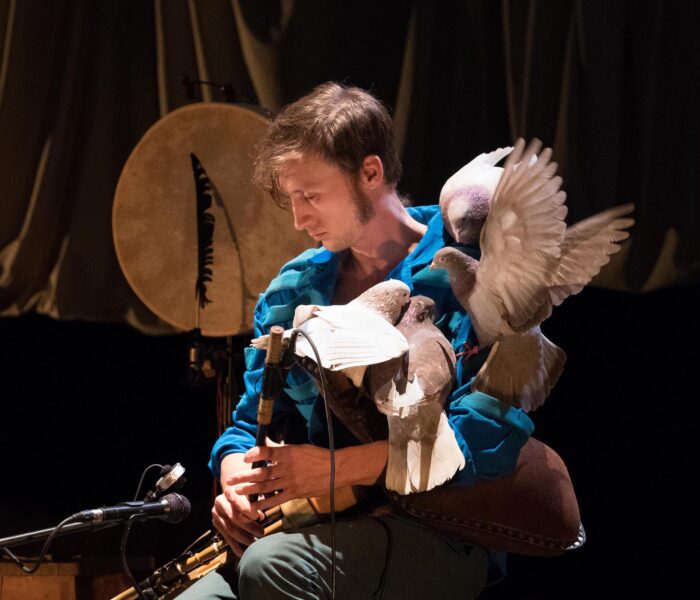La musique – et aussi la façon de la partager – est un tout bien plus complexe que ce qu’on imagine. Si l’on veut en finir une fois pour toutes avec l’idée farfelue et si largement répandue que le public n’aime pas les musiques de création, c’est de ce côté-là me semble-t-il qu’il faut regarder. L’écoute de la musique, immobile sur une chaise dans une salle de concert, est en soi déjà chose précieuse, mais vivre l’écoute avec d’autres, dans un contexte non normé, en y associant le mouvement, la découverte de nouveaux espaces, du temps laissé à l’écoute profonde, la manipulation des sons … est une aventure sociale et sensorielle encore bien plus grande.
Vous avez dit “musique” ? Et pourquoi pas performances, séances d’écoutes, siestes et promenades sonores, petit-déjeuners discutés, ateliers participatifs ?
Comme beaucoup de passionné.es de musique, d’improvisation, de rencontres, j’aime offrir à mes oreilles la possibilité de se promener loin des salles de concert traditionnelles, loin des villes, et loin d’une approche conventionnelle du concert.
Quand je pense au plaisir de l’écoute, les images qui me viennent en premier à l’esprit sont celles qui ont accompagné mes balades au gré de quelques festivals en milieu rural.
Dans mon esprit, ces images, autant visuelles que sonores, défilent, un peu comme ces images que la lanterne magique projette sur le mur de la chambre de l’enfant, dans La Recherche du Temps perdu, et qu’il observe rêveusement et fiévreusement.
Ma lanterne magique à moi remonte le temps…
Image 1 : Forêt d’Orient, septembre 2022
Me voilà entre lac et forêt, à l’invitation de l’Ensemble Itinéraire et du festival Mondes Sonores en Forêt d’Orient #1 dans l’Aube (septembre 2022), une édition dédiée à la mémoire du compositeur Raymond Murray Schafer “musicien de la vie sonore du monde,
pionnier de l’écologie sonore et fin pédagogue… Il pensait le monde comme une grande musique sans début ni fin.” (édito du festival)
L’Itinéraire a proposé la création française de sa pièce Music for Wilderness Lake, imaginée pour être jouée au bord d’un lac. Il faut imaginer douze trombonistes répartis sur les rives du lac d’Orient et qui s’intègrent avec délicatesse aux sons du paysage, tout en suivant les signaux qu’un chef donne depuis la plage (Léo Margue). Les deux mouvements de l’œuvre “Dusk” et “Dawn”, se jouent au crépuscule et à l’aube, au moment où le paysage sonore bascule entre le jour et la nuit.J’ai choisi d’assister à la création de “Dusk” au petit matin. Le froid est saisissant, les musiciens luttent contre l’engourdissement des doigts. On les voit s’éloigner sur les rives du lac jusqu’à disparaître de notre champ de vision. Le public fait face au lac, face au ciel ; devant nous, en bordure de lac, Léo Margue qui dirige les musiciens avec des drapeaux de couleur. Comme tous ceux qui sont tombés du lit pour assister à la création de “Dusk”, je m’allonge dans le sable… Le reste de la scène tient en une image : confusion de la ligne du lac et du ciel, qui peu à peu se teinte de rose et d’orangé, pendant que la musique de Murray Schafer dialogue avec le vent et les éléments. Sentiment sans doute erroné – mais tellement enivrant – d’assister à la naissance du monde !
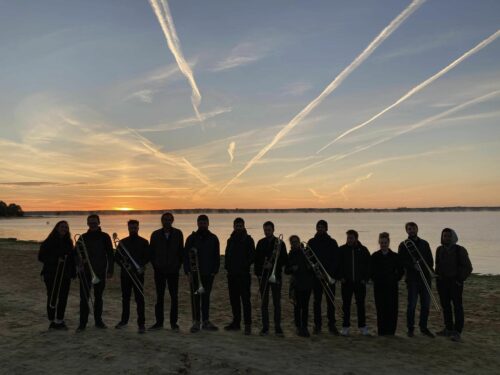
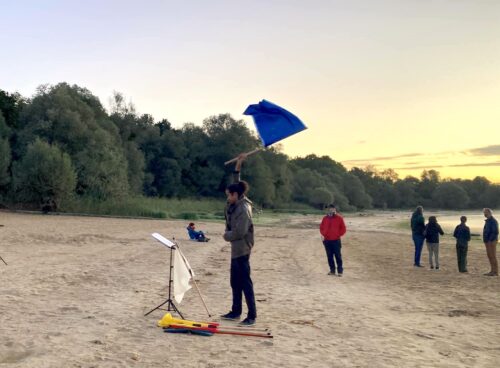
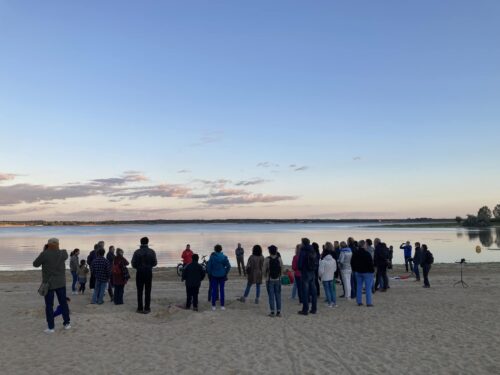
Image 2 : Neuvy-Le-Roy, juillet 2022
L’Ensemble Ptyx a lui aussi son festival, les In:entendu.es, là encore en pleine campagne : deux journées (et une nuit !) de musiques inouïes et contemporaines (j’y ai découvert par exemple l’univers étonnant du compositeur suisse Charles Uzor). Les musicien.ne.s de l’ensemble s’emploient à nous prendre et nous surprendre au détour d’une promenade grâce à des impromptus musicaux. La compositrice Lucie Prod’homme a concocté deux siestes musicales – dont une acousmatique – avec transats obligatoires, au Moulin de Gruteau et dans le parc du presbytère de Neuvy-le-Roi. Jusque-là, du bonheur évidemment, mais un bonheur déjà vécu sous d’autres cieux (on devient difficile avec le temps !). L’image qui me reste de cette édition, c’est celle de la nuit – In-Nuit – qui a refermé le festival : 9 h de musique offertes aux dormeurs – ou insomniaques consentants – installés dans des transats dans le gymnase du village.
Au menu de cette nuit bien sonore, des créations pensées spécifiquement pour cette occasion : oeuvres de Alexandre Amat, Marie-Hélène Bernard, Raphaèle Biston, Aurélio Edler-Copes, Guillaume Hazebrouck, Pierrick Jacquemmoz, Evgenii Lebedev, Maxime Mantovani, Matteo Plassard, Audrey Podrini, Nicolas Robez-Masson, complétées par des pièces de Eve Beglarian, Luc Ferrari, Terry Riley. Un défi, et pour le public, et pour les musiciens ! Je salue ici l’incroyable énergie et l’engagement des musiciens de l’ensemble regroupés en cercle, au milieu du gymnase et des dormeurs. Deux temporalités et deux mondes en dialogue ; un monde flottant, et un monde de vivants bien actifs !
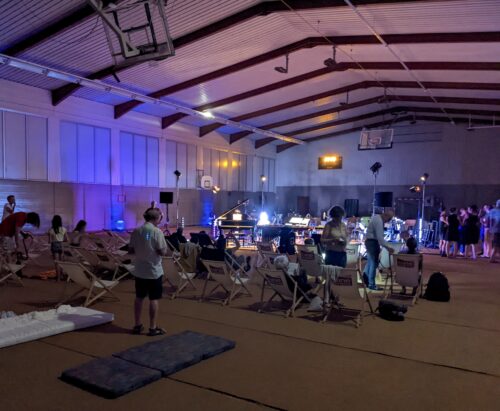
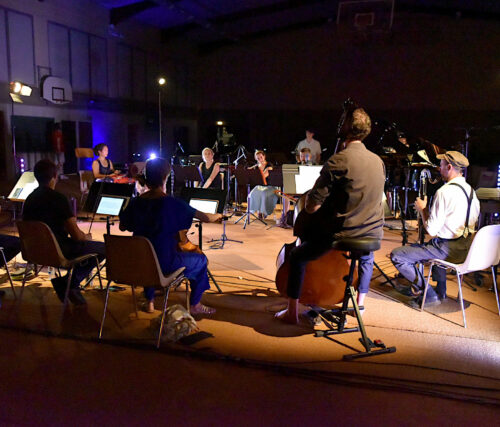
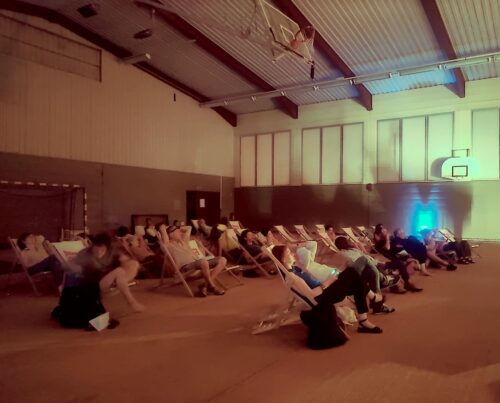
Image 3 : Festival Pépète Lumière, Clunisois #10, 2019
Retour sur images… Cette édition se déroule à Blanot, magnifique village dans les Monts du Mâconnais, entouré de forêts et surplombé par le Mont Saint-Romain. Blanot a aussi ses grottes. Pépète Lumière a investi tous ces lieux, en proposant chaque jour aux festivaliers une marche, sonore et poétique à la fois. Quelle idée simple et géniale en même temps que celle de la marche, déclinée à l’envie : Marche pétrifiée, Marche étourdissante, Marche contemplative et Marche sur la tête !
De la Marche pétrifiée sur le site des grottes de Blanot, je garde une image saisissante, celle du contrebassiste David Chiesa et de la comédienne Flore Audebeau, qui du fond du gouffre, ont fait jaillir leur version d’un poème puissant de Christophe Tarkos.
De la Marche étourdissante (boucle autour du village de Blanot, jalonnée par quantité de surprises sonores et visuelles), j’ai en mémoire les 1001 tours de passe-passe du trio de trombones Bomonstre (Olivier Bost, Patrick Charbonnier et Fabrice Charles), notamment ce moment où les musiciens, dissimulés dans l’Église de Blanot, porte close en apparence, se sont mis à jouer, créant la surprise. Les sonorités des trois trombonistes invisibles semblaient jaillir des pierres au passage des promeneurs !
En mémoire aussi, la poésie intense du petit matin, et mes propres pas somnolents lors De la Marche contemplative proposée dès 5h par un audio-naturaliste et l’oiseau-musicien, le saxophoniste Lionel Garcin. Une progression tout en douceur qui commençait dans les champs, et se poursuivait dans la forêt qui entoure le Mont Saint Romain. Oreilles grandes ouvertes vers les chants d’oiseaux, les sons des animaux, le rugissement du vent … : une autre musique, certes, que celle des salles de concerts, mais qui nous rappelle que le monde sonore est sans limite ! Parmi les promeneurs,il me semble qu’un paysan de la région écoute les sons de la nature avec grande attention. Quand je lui tends mon micro à la fin de la promenade, il étouffe des sanglots, me disant qu’il avait eu le sentiment d’avoir enfin “rencontré” la réalité qui l’entoure, un paysage qu’il connaît pourtant de la première à la dernière herbe …
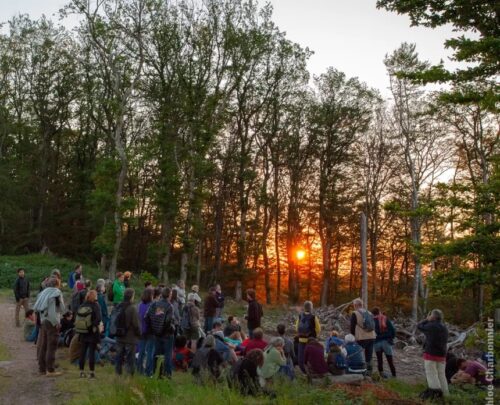
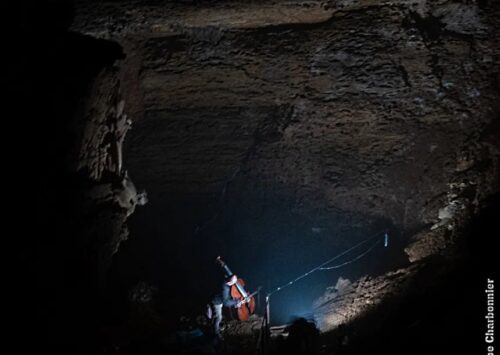
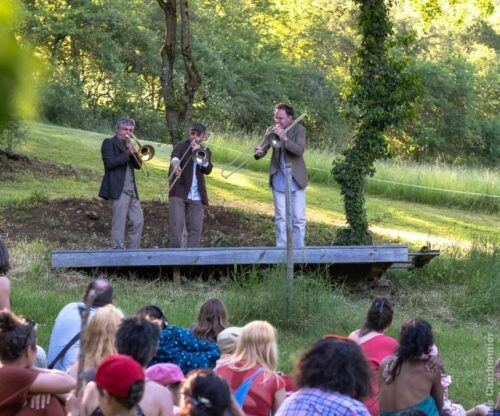
Ma lanterne magique pourrait faire défiler à présent les nombreuses, très nombreuses images laissées par les éditions successives de trois festivals singuliers : Jazz à Luz dans les Hautes Pyrénées, Le Bruit de la Musique dans la Creuse et Densités dans le Meuse. Les deux premiers m’ont déjà inspiré quelques réflexions récentes (cf chroniques Hémisphère Son). Je me contenterai ici d’un clignement d’œil sur la lanterne !
Image 4 : Festival Densités, Fresnes en Woëvre (Meuse)
De ce festival dédié aux musiques de création et à l’improvisation, voici quelques éclats.
Des images intra muros d’abord : la Salle des fêtes de Fresnes en Woëvre, avec ses sièges modulables, dont on a le sentiment qu’ils “marchent tout seuls”, car des mains agiles les déplacent entre chaque concert pour donner l’illusion d’un espace en permanente évolution. Le sol boisé de cette salle des fêtes, de nombreux danseurs fabuleux l’ont foulé, parmi eux le danseur anglais Julyen Hamilton en 2010, avec une inventivité et une poésie inouïes : la musique de ses pas et de ses mouvements est gravée pour toujours dans ma mémoire!
Souvenir poignant aussi du poète sonore Bernard Heidsieck disant Vaduz en 2006, et déroulant son livre-accordéon au fil de la lecture, nous emportant dans son maelström de mots ! Quantité de musiques ont résonné dans ces murs : des musiques sauvages, expérimentales, acoustiques, électroniques ; une alternance de formats courts, de propositions très contrastées faisant cohabiter musique, texte, danse …
Densités, ce sont aussi des images extra muros; le jardin de Marie par exemple : “un jardin extraordinaire (Emmanuelle Pellegrini, directrice du festival), peuplé de vieux arbres, de végétaux divers et de fleurs. Elle l’a investi depuis de longues années d’une poésie délicate et élégante.” En 2014, pour la 21ème édition du festival, le jardin de Marie avait accueilli l’installation de Pierre Berthet : “Percussionniste, Pierre Berthet, aime la fragilité, le souffle du vent dans les arbres, l’eau qui goutte, les branches qui tressaillent, les ressorts qui vibrent. Il met au point des installations sonores, fragiles et discrètes, se jouant des limites entre l’événement et le non-événement. Elles sont toujours en parfaite communion avec les sites qu’il investit de ses matériaux hétéroclites…”. Entre deux concerts, il était possible de venir se ressourcer dans le jardin de Marie et d’écouter/regarder le monde de Pierre Berthet entrer en vibration ! Je ne m’en suis pas privée…
Le dehors, à Fresnes en Woëvre, c’est aussi tout autour de la Salle des Fêtes une rivière, des rues, et quelques jardins que le percussionniste Alfred Spirli, le tromboniste Thierry Madiot, le batteur Michel Deltruc et le danseur Karim Sebbar ont investis avec une douce folie en 2021 avec une performance baptisée Sports et divertissements, en clin d’oeil à Erik Satie. En habitués du théâtre de rue, ces trois-là, on le sait, font feu de tout bois : les sons et les mouvements improvisés génèrent des situations grotesques, périlleuses, poétiques.
Comment rester insensible à cette imagination spontanée ?
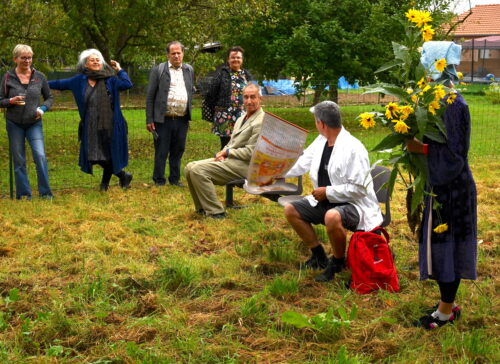
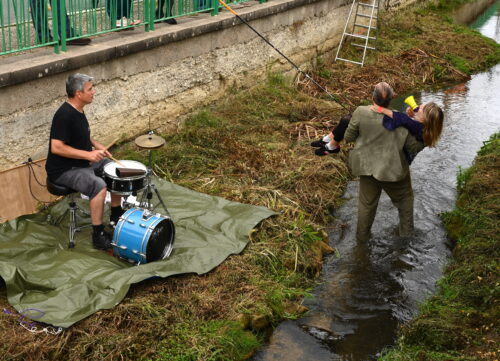
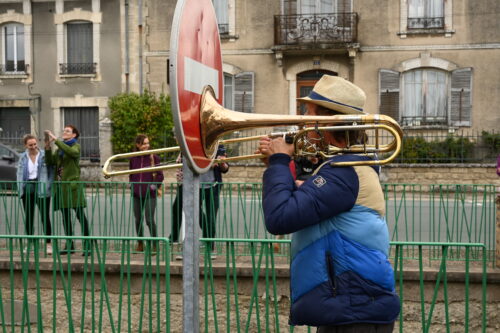
Image 5 : Festival Jazz à Luz, Luz Saint Sauveur
Arrivée dans les Pyrénées, ma lanterne magique s’emballe ! Que de moments forts vécus dans la vallée de Luz, dans ses jardins, ses prés, ses courettes, son chapiteau – et ses espaces couverts – la Maison de la Vallée, les Thermes de Luzea avec leur acoustique très réverbérée, ses églises de village…
Quelques images s’imposent à moi : celle d’abord d’une rencontre musicale entre l’accordéoniste Pauline Oliveros et le contrebassiste Barre Phillips en 2010, sous le chapiteau. Avec la distance, je m’aperçois qu’il y avait dans cette rencontre une évidence, placée sous le signe du Deeplistening, car si ce terme d’écoute profonde est une invention de Pauline Oliveros, Barre Phillips l’a bel et bien en partage, lui qui s’engage “totalement” dans chaque son joué.
À ce souvenir se superpose l’image de ces deux mêmes musiciens, conversant cette fois à mon micro sur la Colline Solferino, colline que Barre Phillips avait eu un peu de mal à gravir : évocation des parcours croisés de deux Américains inventifs et paisibles aux vies intenses, dont la rencontre a eu lieu sur le tard … à Luz !

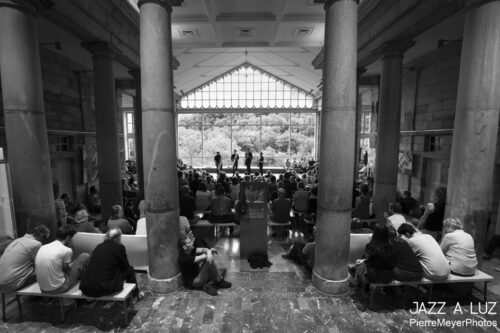
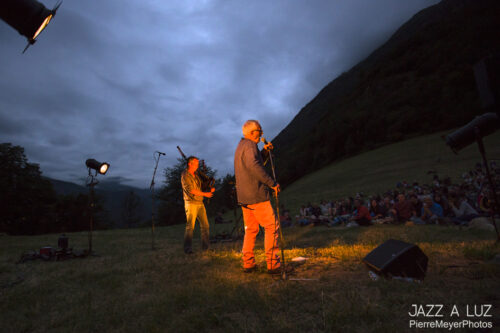
Autre image, à la tombée de la nuit, au pied du Château Sainte-Marie en 2017 : le duo Ametsa, formé par le chanteur basque Benat Achiary et le sonneur Erwan Keravec : épiphanie sonore, faite d’envols d’aigle et de souffles sauvages.
Une évocation en intérieur cette fois, dans les thermes de Luzea : la Messe Notre-Dame de Guillaume de Machaut arrangée pour quatuor de saxophones par le quatuor du même nom (arrangement, Quentin Bardiau). L’espace de ces thermes est unique en son genre : l’entrée principale dessine un grand carré entouré de colonnes, qui semble se poursuivre hors les murs grâce à une immense baie vitrée ouverte sur les montagnes. On est dedans et dehors à la fois. Le lieu résonne beaucoup, comme les églises ou les cathédrales où la musique de Machaut a dû sonner autrefois. Les musiciens du Quatuor Machaut sont dispersés dans différents points de l’espace. Ils entrelardent la musique de cette magnifique messe avec des improvisations de leur cru : un tissage subtil, finement réalisé, et un moment de temps suspendu !
Comment oublier par ailleurs l’improvisation matinale du trompettiste Joe McPhee pour le public de la Maison de la Vallée en juillet 2008 (#18) ? Je le revois assis au devant de la scène. La salle est pleine. Le premier son qui sort de la bouche de Joe McPhee n’est pas celui de sa trompette. C’est le son de sa voix, douce et grave, une voix de conteur. Et ce qu’il nous raconte ce matin-là est une forme de préambule à sa musique. Joe McPhee, musicien afro-américain, raconte en anglais au public de cette petite salle de montagne ce que les noirs victime du racisme ont subi en Amérique : des enfants noirs brûlés vifs dans une église, autrement dit une réalité proche de celle chantée par Billie Holiday dans Strange Fruit à la fin des années 1930. Image vibrante, bouleversante de cet homme seul sur scène, merveilleux improvisateur, entouré par tant de fantômes !
Image 6 : Festival Le Bruit de la Musique : festival d’aventure sonores et artistiques – Domeyrot, Saint-Silvain-sous-Toulx, Toulx-Sainte-Croix, La Spouze (Creuse)
Dix bougies déjà, pour ce festival niché dans une région qu’on dit dépeuplée, la Creuse !
Un défi relevé avec inventivité et passion par une belle équipe, tombée amoureuse de cette région, et qui pourrait reprendre à son compte l’idée d’écoute profonde, le fameux deeplistening de Pauline Oliveros, même si “le modèle” du percussionniste Lê Quan Ninh, co-directeur du festival avec la violoncelliste Martine Altenburger, c’est l’écoute cagienne.
Ma lanterne magique s’arrête sur trois images du festival, reliées à l’idée de participation du public. Car si Le Bruit de la Musique a pour coeur la création sonore, la musique contemporaine – écrite comme improvisée, le cinéma expérimental, les musiques électroacoustiques, la performance, et si ce festival demande beaucoup au public en terme d’écoute, il propose aussi à ce même public d’agir, de jouer avec les sons, et donc de faire sa propre expérience de l’écoute.
En mémoire, trois moments-clefs : l’Opéra de la Fanfare de la Touffe en 2017, Eine Brise de Mauricio Kagel pour 111 cyclistes en 2018, et l’atelier Fluxus en 2020. Le principe de ces ateliers est simple : les volontaires s’inscrivent en début de festival, répètent chaque jour avec les autres participant.es, et participent à la restitution finale. Aucune connaissance musicale n’est requise et il n’y a pas de limite d’âge. Les participant.es, encadré.es par un ou une musicienne (Natacha Muslera, Michel Doneda, Fabrice Charles), créent à leur tour un opéra, une performance de Kagel, des actions Fluxus. De tels moments ne s’oublient pas, j’en suis convaincue !
Eine Brise (Mauricio Kagel) – festival Le Bruit de la Musique 2018 from Ryoanji Asso on Vimeo.
Dans le même ordre d’idée, je pense au concert participatif Audience orchestra proposé en 2018 par un ensemble estonien, l’Ensemble U:, et qui avait été introduit ainsi : “les auditeurs et les auditrices obtiennent un pouvoir inhabituel : ils·elles peuvent contrôler comment le concert évolue, quelle musique est jouée et donne immédiatement leur opinion. Au contraire d’un orchestre normal basé sur des règles et des hiérarchies strictes, l’orchestre d’auditeurs agit sur des bases démocratiques : chacun·e a une voix, et les décisions sont actées, quand une majorité est pour elles. La principale problématique de cette expérimentation singulière est de questionner et de jouer autour de l’idée de « démocratie en musique ». Que veut et qu’attend le public ? Est-il heureux si c’est au bout du compte la « voix du public » qui contrôle le concert ?”
L’outil de ce concert participatif : le smartphone.
Étrange vision que cette forêt de smartphones allumés dans une église de la Creuse !
Ma lanterne magique pourrait décliner bien d’autres images encore, souvenirs d’expériences multiples, qui ont laissé des traces profondes. Une chose est sûre : ce que nous cherchons toutes et tous, auditrices et auditeurs gourmand.es d’aventures sonores dans de tels événements, c’est une forme d’utopie à l’œuvre, joliment décrite par le festival creusois :
“Partager des moments d’écoute
Mettre en présence des musiques et des artistes plus rares que les autres
Inviter à cultiver le goût d’être surpris
Retrouver les sensations premières et oubliées que procurent le phénomène sonore
Imaginer des enjambées entre nature et culture
Soulever le voile des habitudes
Choisir d’être étonné par l’inconnu plutôt que d’en douter
Faire l’expérience de ce qui n’est pas répété à l’envi
Pratiquer par soi-même pour se rendre compte
Faire l’expérience des agissements du son d’instant en instant
Écouter avec ses oreilles bien plus qu’avec sa mémoire
Accepter de n’avoir rien à comprendre et de ne rien reconnaître
Et surtout :
Sourire à l’imprévisible…”
Credo du festival Le Bruit de La Musique
Anne Montaron
Photos © Ensemble Itinéraire
Photos © Pierre Meyer
Photos © Mathieu Thomassin
Photos © Chloé Charbonnier



)
